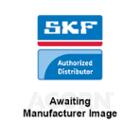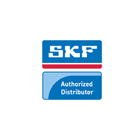TMHP 15-4, SKF, Arm for TMHP 15, 689 mm long


Arm, EAN code: 7316570800272
This item is not currently available from our stocks.
Despatch date information is on request.
TMHP 30-1, SKF, Arm for TMHP 30, 170 mm long


Arm, EAN code: 7316570970616
This item is not currently available from our stocks.
Despatch date information is on request.
TMHP 30-3, SKF, Arm for TMHP 30, 600 mm long


Arm, EAN code: 7316571049311
This item is not currently available from our stocks.
Despatch date information is on request.
TMHP 50-1, SKF, Arm for TMHP 50, 140 mm long


Arm, EAN code: 7316570719956
This item is not currently available from our stocks.
Despatch date information is on request.
TMHP 50-2, SKF, Arm for TMHP 50, 320 mm long


Arm, EAN code: 7316571087399
This item is not currently available from our stocks.
Despatch date information is on request.
TMHP 50-3, SKF, Arm for TMHP 50, 570 mm long


Arm, EAN code: 7316570701654
This item is not currently available from our stocks.
Despatch date information is on request.
TMHP 50/320X, SKF, Hydraulically Assisted Heavy Duty Jaw Puller


Hydraulic Pullers, EAN code: 7316570141023
TMIC C22-28, SKF, Extractor TMIC, collet size 22-28 mm


Extractor, EAN code: 7316576920592
TMIC C7-8, SKF, Extractor TMIC, collet size 7-8 mm


Extractor, EAN code: 7316576920554
TMIP 30-60-CX, SKF, Tool case (empty) with inlay for TMIP 30-60


Tool case, EAN code: 7316577583208
This item is not currently available from our stocks.
Despatch date information is on request.
TMIP 7-28-CX, SKF, Tool case (empty) with inlay for TMIP 7-28


Tool case, EAN code: 7316577155993
This item is not currently available from our stocks.
Despatch date information is on request.
TMIP E15-17, SKF, Extractor TMIP, size 15-17 mm


Extractor, EAN code: 7316573956624
TMIP E20-28, SKF, Extractor TMIP, size 20-28 mm


Extractor, EAN code: 7316573956631
TMIP S2, SKF, Slide hammer large for TMIP 30-60


Slide hammer, EAN code: 7316574275229
TMMA 100H-1, SKF, Arm for TMMA 100H with bolt


Arm, EAN code: 7316572467619
TMMA 100H/12-3, SKF, Opening mechanism for TMMA 100H or 120


Opening mechanism, EAN code: 7316572467657
TMMA 3-1, SKF, Set of safety pins, 30 kN


Safetypins, EAN code: 7316571456485
TMMA 60-3, SKF, Opening mechanism for TMMA 60


Opening mechanism, EAN code: 7316572467558
This item is not currently available from our stocks.
Despatch date information is on request.
TMMD 100-A2, SKF, Arm for TMMD 100, size A2


Arm, EAN code: 7316572393161
TMMD 100-A3, SKF, Arm for TMMD 100, size A3


Arm, EAN code: 7316572393178
What is a bearing puller?
The Bearing Puller was designed to help in the removal of bearings from shafts and housing. A bearing puller will generally have two or three metal jaws to grip the bearing, either by the inner or outer raceway, known as internal pullers and external pullers.
The centre bar of the puller is then positioned in the centre of the shaft's end. Opposing forces are then used to push against the end of the shaft while the jaws pull against the bearing, forcing the bearing to move off the shaft.
We can categorise bearing pullers as mechanical jaw pullers, hydraulic pullers, strong back pullers, and heavy-duty jaw pullers.
Why use a bearing puller kit?
Bearing pullers are one of the most effective methods of cold dismounting. When a component is securely mounted and cannot be loosened manually, a bearing puller kit is the solution
This could include situations where a damaged part has led to machine breakdown. The failed component must be removed as quickly and as safely as possible in order to keep downtime to a minimum.
If you don’t have any specialist tools around, it could be tempting to use a hammer and brute force to remove the bearing. However, this can lead to surrounding components becoming damaged, causing further downtime.
A bearing puller can efficiently remove the stuck component from the shaft or recess, without causing any damage to the shaft or other surrounding components. This helps to promote the uptime and reliability of your machinery.
Bearing puller kits also offer a safe method of removal when compared to techniques such as brute force or naked flames. Leading manufacturers such as SKF have optimised puller design to ensure that they enable maximum worker safety. After all, no business wants to see its staff injured.
Internal bearing pullers complete this process by gripping the inner bore of the bearing, whilst external pullers grip the outer edge of the bearing, making internal pullers and external pullers fundamentally different.

Mechanical pullers
Standard jaw pullers
A versatile puller range consisting of two and three arm pullers. Standard jaw pullers offer easy and safe jaw puller operation and are one of the easiest and most effective methods of removing small to medium sized bearings.
Reversible jaw pullers
Robust pullers for internal and external pulling. These multi-purpose reversible pullers are suitable for removing bearings and other components.
The standard bearing puller set consists of eight pullers and is capable of dismounting a wide range of bearings and industrial workpieces.
Extra long arms are available on the larger sizes to help remove bearings placed far from the end of a shaft. In addition, extension accessories are also available.
Heavy duty jaw pullers
In addition to an exceptional grip on medium to large size bearings, these powerful self-centring mechanical pullers provide perfect alignment and shaft protection.
Hydraulic pullers
Effortlessly remove bearings, pulleys, gears and other workpieces. A major benefit of the hydraulic bearing puller is its ability to dismount bearings in a safe, fast and more straightforward manner.
Hydraulically assisted heavy-duty jaw pullers
The hydraulically-assisted jaw puller is a hydraulic version of the heavy-duty jaw puller mentioned above. However, the hydraulically-assisted version enables high forces to be easily applied and provides combined puller power and safety forces.
In addition, the combination of a spindle and hydraulic cylinder allows the working length to be easily adjusted.
If you’d like to learn more about what kind of bearing puller you should use, read our guide on What Kind of Bearing Pullers Should I Use? next.
Why select Acorn for expertise on bearing puller kits?
We’ve been providing expertise on bearing pullers for over 40 years. Need support? Our specialists are on hand for all your needs. Check out our reviews for more information.
Any questions on Bearing Puller Kits?
Contact us today for more information regarding our range of Internal Bearing Pullers.
Bearing pullers FAQs
What is a bearing puller kit, and what is it used for?
A bearing puller is a tool designed to remove bearings, gears, pulleys, or similar parts from a shaft or housing without causing damage. They are commonly used in automotive, industrial, and machinery maintenance for safe and efficient bearing removal.
What types of bearing pullers are available?
There are several types, including:
-
Two-Jaw and Three-Jaw Pullers: Use arms to grip and remove the bearing or gear from a shaft.
-
Internal pullers and External Pullers: Internal pullers grip from the inside of a bearing, while external pullers grip from the outside.
-
Slide Hammer Pullers: Ideal for removing tightly fitted parts with an impact action.
-
Hydraulic Pullers: Provide high force for removing large, stubborn bearings.
How do I choose the right bearing puller?
Consider the bearing's size, fit, and accessibility. Ensure the puller’s reach and spread match the bearing’s dimensions. For heavy-duty applications, a hydraulic puller may be more effective, while smaller bearings might only need a two- or three-jaw puller.
The method with which you intend to pull the bearing must also be considered. When looking to pull the bearing from the inner bore, an internal bearing puller must be used, whilst when looking to pull the bearing from the outer edge of the bearing, an external puller should be used.
What safety precautions should I take when using a bearing puller?
Wear safety glasses, ensure the puller is properly aligned, and avoid excessive force to prevent tool damage or injury. If a part resists removal, use controlled, steady force rather than sudden jerks, or switch to a hydraulic puller if needed.
Do Acorn Industrial Services offer bearing puller kits for hire?
Acorn offers a comprehensive service for hiring bearing puller kits, allowing you to safely and effectively remove bearings without high upfront costs. Check out our bearing puller hire page for more information.
